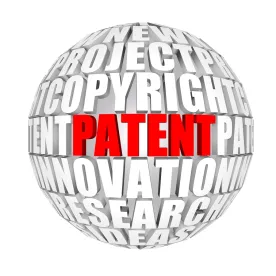The United States Supreme Court is set to render its decision on the grant or denial of Sequenom, Inc.’s (“Sequenom’s”) petition for writ of certiorari that posed the issue:
Whether a novel method is patent-eligible where: (1) a researcher is the first to discover a natural phenomenon; (2) that unique knowledge motivates him to apply a new combination of known techniques to that discovery; and (3) he thereby achieves a previously impossible result without preempting other uses of the discovery?
As reported by BNA’s Life Science and Industry Report, the Supreme Court held its last conference on June 23rd before adjourning for the summer, and the Sequenom petition is one of the yet-to-be released decisions from the 2016 judicial season.
Patent-Eligibility Redefined
Petitioner Sequenom seeks review of the Federal Circuit’s 2015 decision (Sequenom Inc. v. Ariosa Diagnostic Inc., 788 F.3d 1371 (2015)) invalidating Sequenom’s U.S. Patent No. 6,258,540, the ‘540 Patent, on the ground the claims recited no more than a judicial exception to patent eligible subject matter, i.e., that it fails to satisfy 35 U.S.C. 101. (My prior post of June 30th, 2015 reviews the Federal Circuit’s ruling) Sequenom’s ‘540 Patent claims exploited the discovery that maternal DNA contains cell-free DNA (“cffDNA”), which in turn can be used to determine fetal characteristics without the need for more invasive techniques such as amniocentesis. Regardless that Sequenom’s patent is built upon a valuable discovery of a natural product not previously known or described, the Federal Circuit, applying the Supreme Court’s Alice Corp. v. CLS Bank Int’l, 234 S. Ct. 2347 (2014)(“Alice”) and Mayo Collaborative Services v. Prometheus Laboratories, Inc., 132 S. Ct. 1289 (2012)(“Mayo”), held that the claims were not directed to patent-eligible subject matter.
Petitioner Sequenom urged the Supreme Court’s review of the Federal Circuit’s Sequenom decision on the ground that the Federal Circuit’s application of Supreme Court Alice and Mayo decisions invalidates an “otherwise plainly meritorious invention.” Petitioner’s writ, page 11 (emphasis in original). Sequenom argues that the Federal Circuit’s reading of Mayo is so broad that its application “invalidates any method patent combining a natural discovery with ‘conventional’ techniques – even if those techniques are admittedly ‘new’ in combination and that new combination admittedly does not preempt all uses of the discovered phenomenon.” Petitioner’s writ, page 13.
Sequenom also took issue with the Federal Circuit’s dismissal of the analysis of whether the claimed invention is preemptive in its review of patent-eligibility, particularly the court’s pronouncement that a preemption analysis is “’made moot’ whenever a legalistic application of Mayo’s test identifies only ‘routine’ or ‘conventional’ techniques in a patent that builds on a natural phenomenon or law.” Petitioner’s writ, pages 14-15.
Industry Support
Sequenom’s Reply Brief notes that that twenty-two separate amicus briefs joined Sequenom’s petition seeking review of the Federal Circuit’s decision. Many of the amici had weighed in on the prior Mayo decision, either during the certification stage or during the merits briefing. The attached table summarizes the amici and their respective positions.
What Next?
There is no doubt that the courts and the USPTO, at least initially, have broadly applied Alice and Mayo to diagnostic method patents and inventions in the personalized medicine space. A denial of petitioner’s request for review will signal that the Federal Circuit’s interpretation is not so off the mark and that claims which combine new, useful and ground-breaking discoveries if claimed in combination with routine and well-known technologies are not patent-eligible. On the other hand, if its recent decisions are any guide, an additional Supreme Court review is no guarantee of additional clarity on the issue.




 />i
/>i

